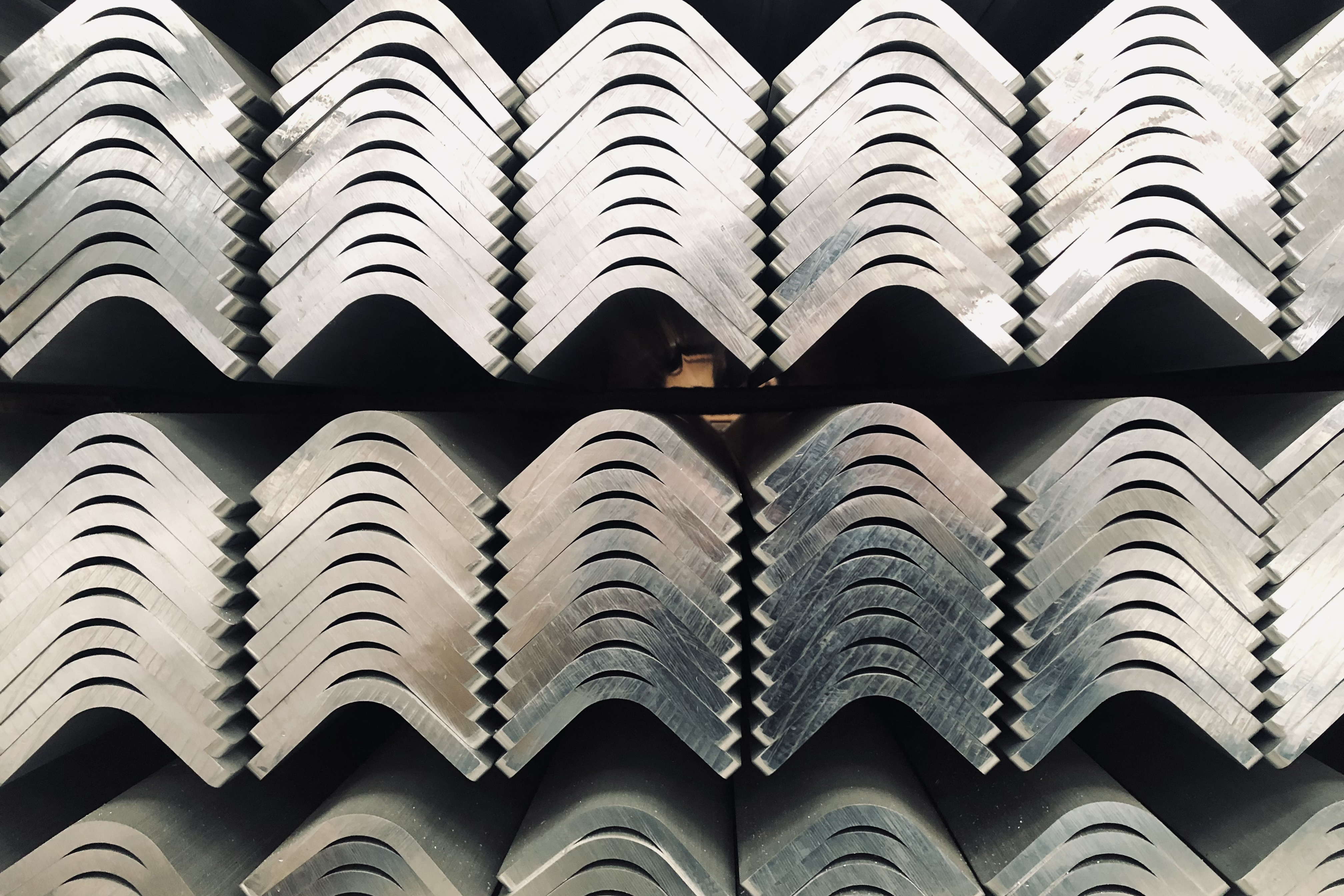
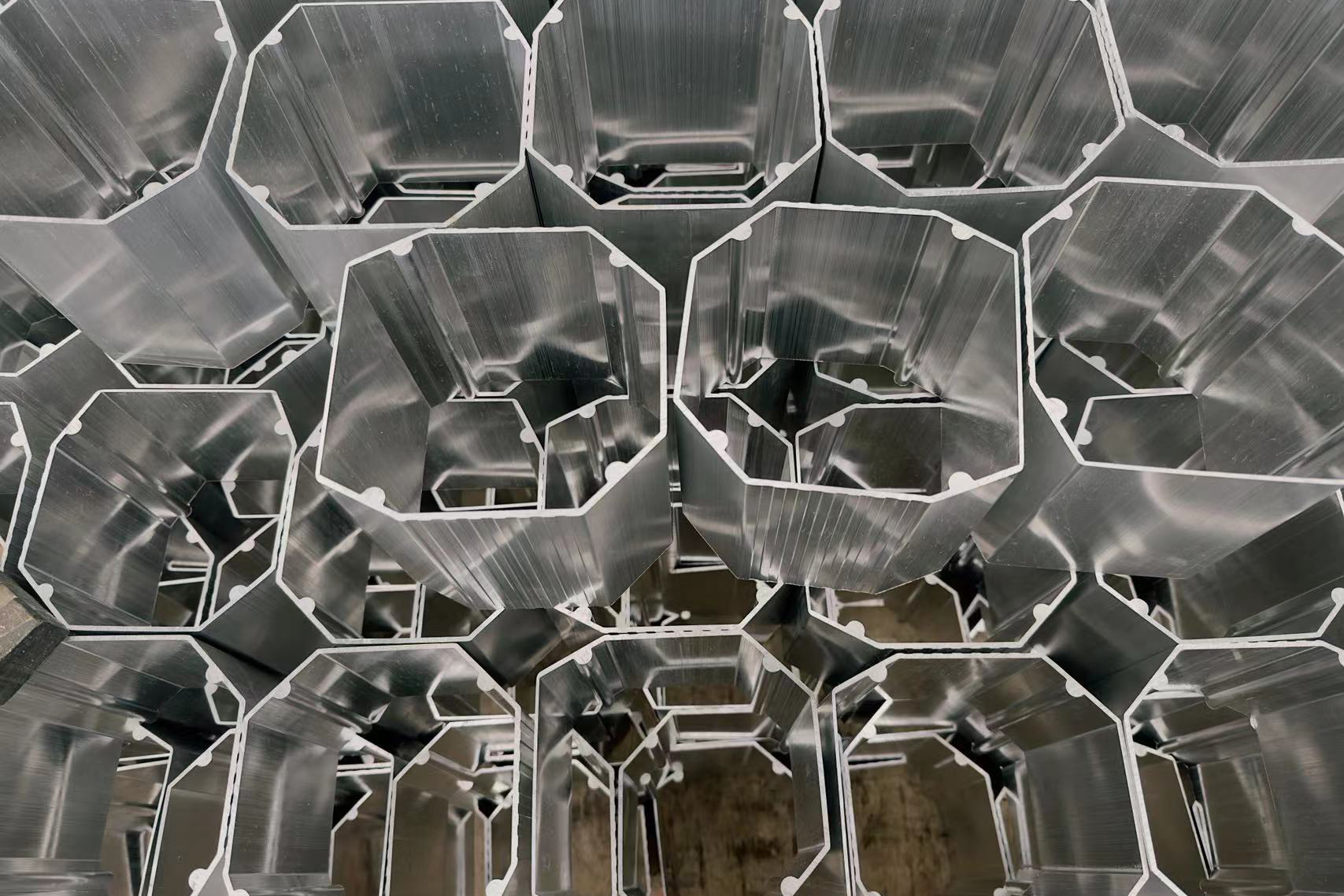
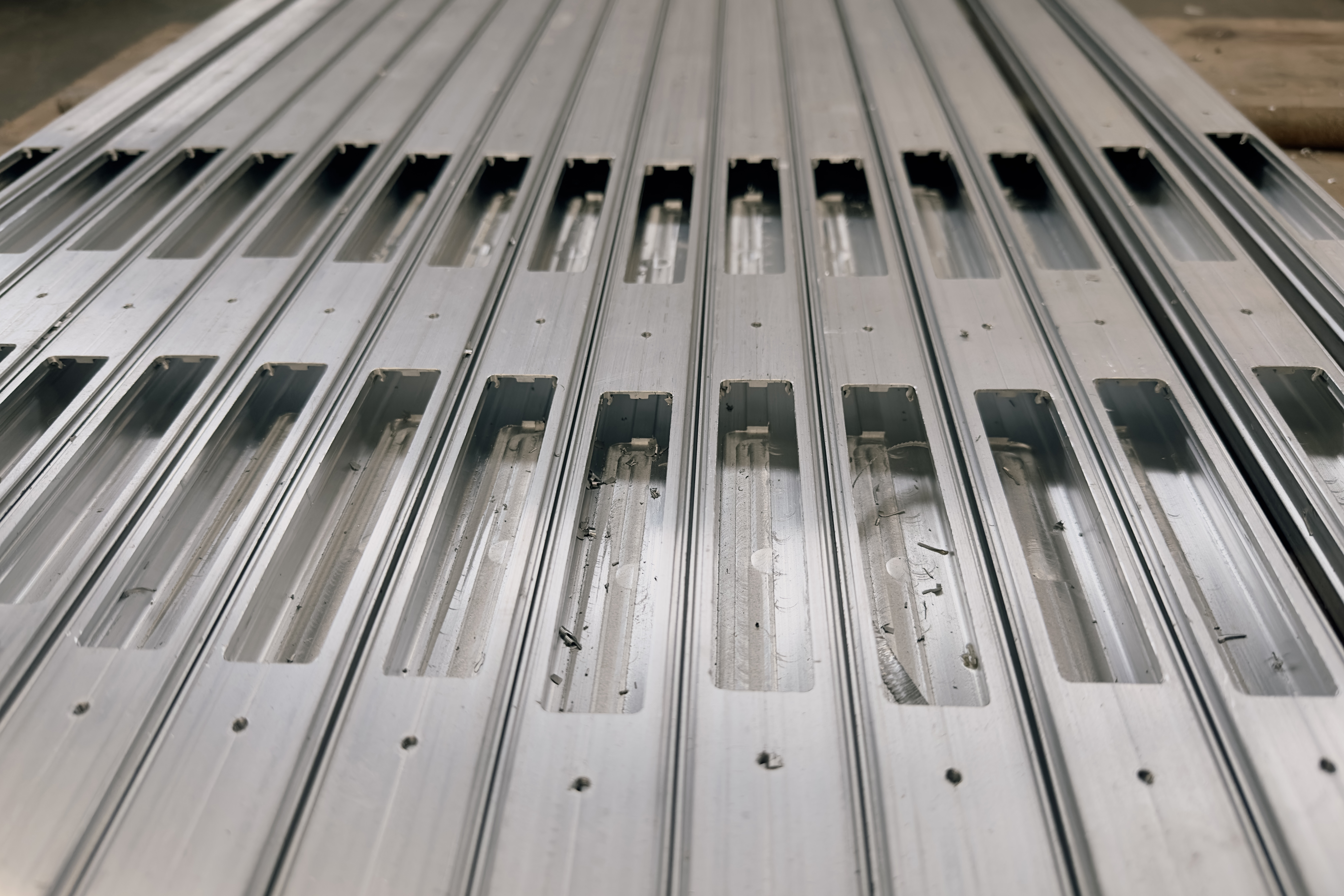
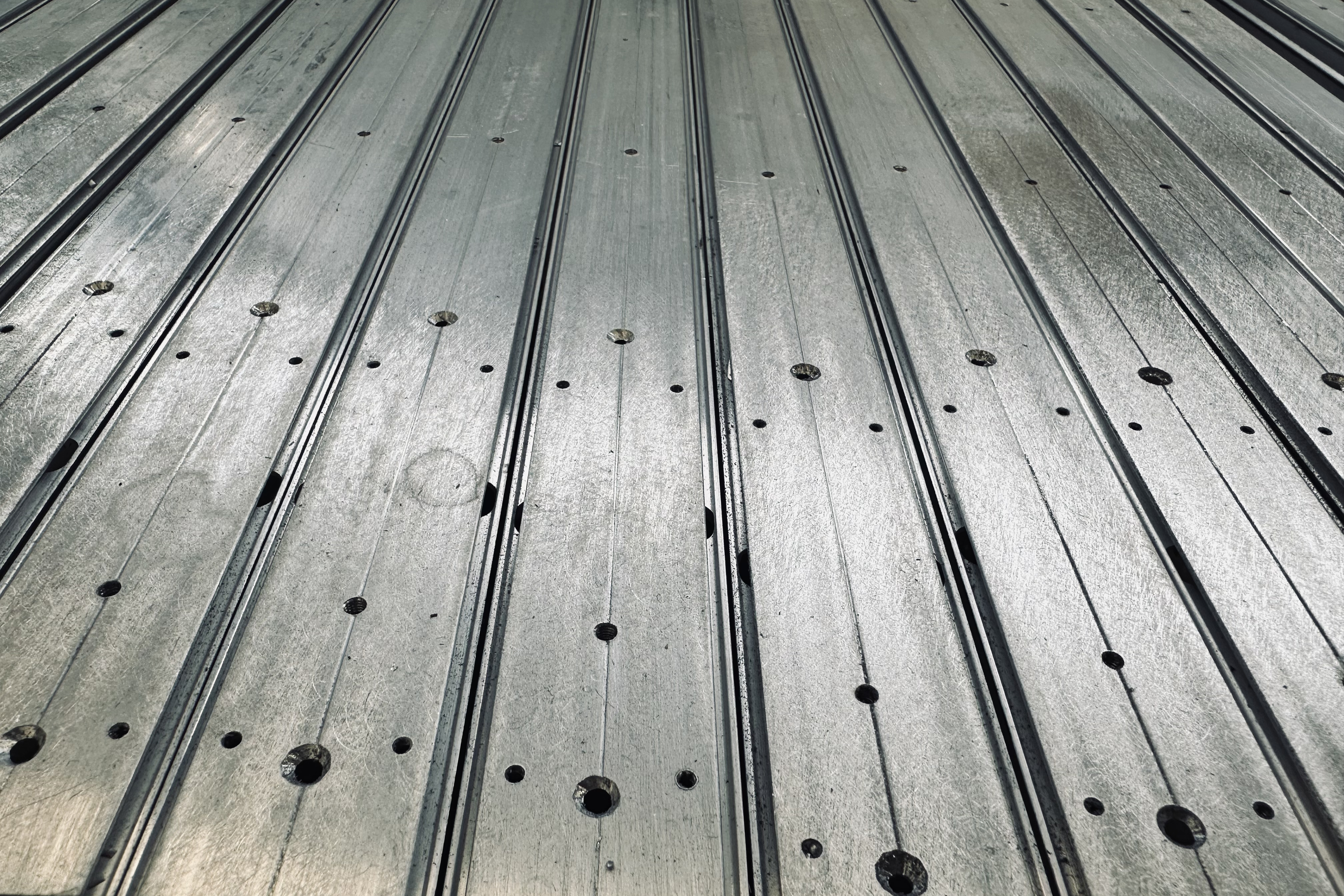
We offer a comprehensive range of CNC machining services with a completely flexible solution for everything from precision component to long length fabrications.
What are the most common aluminum CNC machining processes?
CNC milling machines are the most common and versatile way of machining aluminum parts. The machine uses rotating cutting tools to efficiently and precisely carve material from a stationary block of material.
Traditional milling machines transformed into “machining centers” in the 1960s thanks to the arrival of computer numerical control (CNC) systems, automatic tool changers and tool carousels. These machines are available in 2- to 12-axis configurations, although 3 to 5-axis are the most widely used.
CNC metal lathes, or CNC metal turning centers, firmly hold and rotate a workpiece while a toolhead holds a cutting tool or drill against it. These machines allow for very precise removal of material and manufacturers use them in a broad range of industries.
Typical lathe operations include drilling, shaping, slot-making, tapping, threading and tapering. CNC metal lathes are swiftly replacing older, more manual production models due to their ease of setting up, operation, repeatability and accuracy.
CNC plasma cutters heat compressed air to a very high temperature to create a “plasma arc” capable of melting metal up to six inches thick. Sheet material is held flat against a cutting table and a computer controls the path of the torch head. The compressed air blows away the hot molten metal, thereby cutting through the material. Plasma cutters are fast, precise, relatively easy to use and affordable, and manufacturers use them in many industries.
CNC laser machines either melt, burn or vaporize material away to create a cut edge. Similar to a plasma cutter, sheet material is held flat against a cutting table and a computer controls the path of the high-power laser beam.
Laser cutters use less energy than plasma cutters and are more precise, particularly when cutting thin sheets. However, only the most powerful and expensive laser cutters are capable of cutting through thick or dense materials.
CNC water cutters use extremely high-pressure jets of water forced through a narrow nozzle to cut through material. Water on its own is enough to cut through soft materials like wood or rubber. To cut through hard materials such as metal or stone, operators usually mix an abrasive substance with water.
Water cutters don’t heat material like plasma and laser cutters. This means that the presence of high temperatures won’t burn, warp or change its structure. It also helps to reduce waste and allows shapes cut from a sheet to be placed (or nested) closer together.
Our CNC machining services:
Bending
We can supply tube bending, roller bending, stretch forming and flow forming services to our customers, using tailored processes and integrating other machining services to achieve bespoke results.
Drilling
Our selection of four-axis CNC centres and custom drill bits allow us to combine creative solutions and rapid processing times to get you the best results in the shortest lead time possible.
Milling
We can meet a huge range of milling requirements, from small components to large profiles. With our four-axis CNC centres, we can produce intricate pieces with a range of slots, holes and shapes.
Turning
Our machine turning and boring services are typically four times faster than the manual equivalent. Offering a reliable 99.9% accuracy, CNC turning delivers precise and timely results.
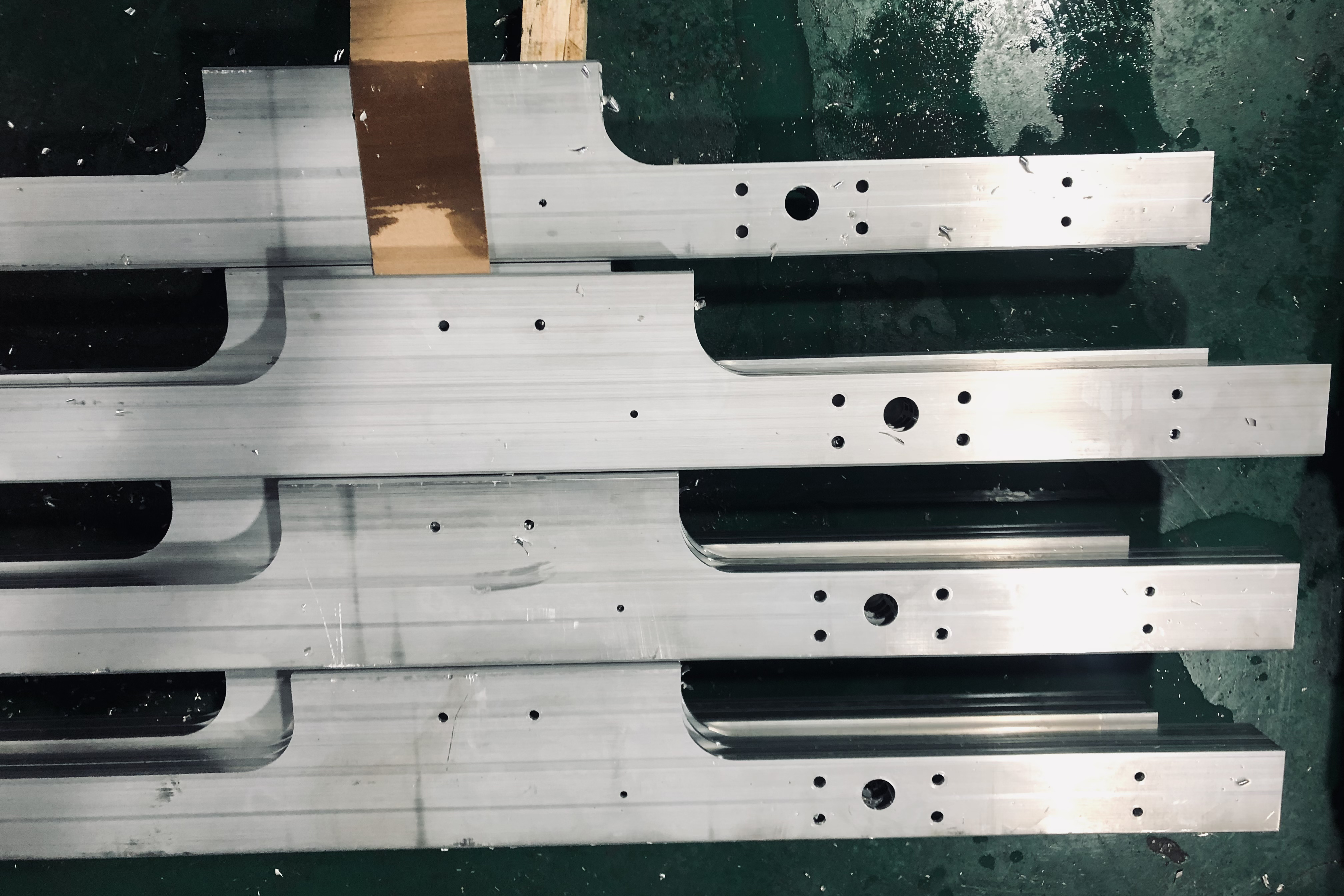

We work with a variety of CNC turning suppliers. Four times faster than manual turning, and up to 99.9% accurate, CNC turning services are vital for a huge range of applications.
What is CNC turning?
During the CNC turning process, an aluminium component is rotated at varying speeds around a central shaft, its rotation pattern determined by the data entered into the computer.
A single-point cutting tool is fitted in the machine. This is then positioned and manoeuvred to produce cylindrical cuts of precise depths and diameters on the spinning component. CNC turning can be used on the outside of a component, resulting in a tubular shape, or on the inside, producing a tubular cavity – this is referred to as boring.
What is the process of turning?
Turning is the name given to the manufacturing process where bars of raw material is held and rotated at high speed. As the piece rotates, a cutting tool is fed to the piece, which works at the material, cutting away to create the desired shape. Unlike other cutting styles where the cutting tools themselves move and spin, in this case, the workpiece is rotated during the cutting process.
CNC Turning is commonly used for cylindrical shaped workpieces, however, it can be used for square or hexagonal-shaped raw materials. The workpiece is held in place by a ‘chuck’. The' chuck' spins at varying RPMs (rotations per minute).
Unlike a traditional lathe, today’s machines are numerically controlled. Often the turning process is under constant supervision and adjustment. Meticulous and exact results are possible due to the lathe being consistently monitored by a computer program. Modern CNC Turning machines have various tools, spindles, and speed capabilities. Additionally, the different sizes and shapes of the cutting tools themselves mean a wide range of geometries are possible. Tubular and circular shapes benefit the most from CNC Turning techniques.
What is CNC turning used for?
CNC turning and boring services are used to fashion components with round or tubular shapes from larger pieces of material. Some of the typical applications we supply CNC turning and boring services for include:
1)Support posts in office furniture
2)Support elements in shower rails
3)Housings for automatic door closers
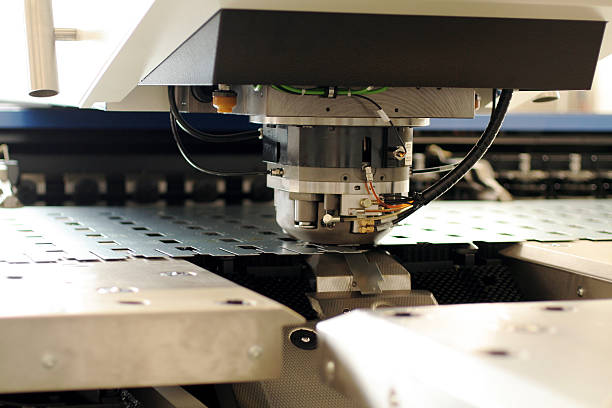
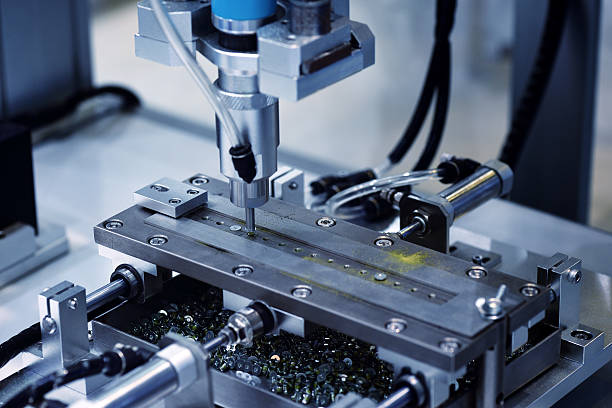
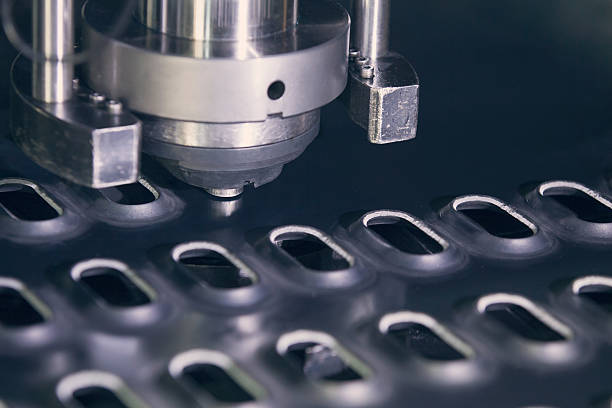
Punching is a quick and cost effective way to create holes of varying diameters in aluminium substrate. Our bespoke tooling capabilities help us offer affordable custom solutions.
What is punching?
Punching is a machining service that is used to create holes or indentations in aluminium profiles. Profiles are placed in a power press and moved along X and Y axes according to the data entered, positioning them under the machine’s punching ram, which then punches out a hole or indented form.
We can punch simple shapes such as circles and squares. We can also use bespoke tooling, and/or a combination of single hits and overlapping geometries, to create unique shapes or configurations.
What is punching used for?
Fast, repeatable and cheaper than drilling, punching is widely used across a diverse array of industries. Some typical applications include:
Events staging
Commercial vehicle accessories
Stairlifts
Marquees
Temporary roadways
Steps and stairnosing
Advantages of Perforated Aluminum
Environmentally friendly: Aluminum sheets are recyclable and have a long lifespan. In actuality, most perforated aluminum sheets come from recycled material. In addition, perforated aluminum requires less material to produce it because of its holes.
Energy efficiency: Aluminum perforated facades allow greater control over the lighting and ventilation of a building than glass does. One can reduce energy costs by using aluminum to reflect some of the heat generated by the sun. The ability of perforated aluminum to reflect solar heat is a significant advantage for HVAC systems because they consume less energy when they don't have to work as hard to keep the temperature steady. As a result, perforated aluminum is a better material for controlling temperature than plastic. Additionally, as perforated materials permit natural light to penetrate the structure, less artificial inside lighting is required, lowering the building's energy consumption. Finally, it has been demonstrated that greater solar protection and ventilation can decrease a building's maintenance expenses by enabling better heat transfer inside a building.
Privacy: Perforated aluminum panels create the illusion of solitude without making a space seem cramped. Parts of a workspace often become shut off and isolated by enclosed walls and panels. As an alternative, a workplace can be partitioned with perforated aluminum panels while maintaining ventilation and view. In addition, the panels reflect and absorb the typical noises and echoes, resulting in a relaxing and less-stressful environment.
Sound Suppression: One of the most surprising benefits of perforated aluminum is its ability to suppress sounds. Unwanted noise is dispersed and diminished through perforated panels. This feature is perfect for workplaces where loud, bothersome noises can be distracting and uncomfortable. In addition, perforated aluminum panels can be used both inside and outside to disperse sound waves.
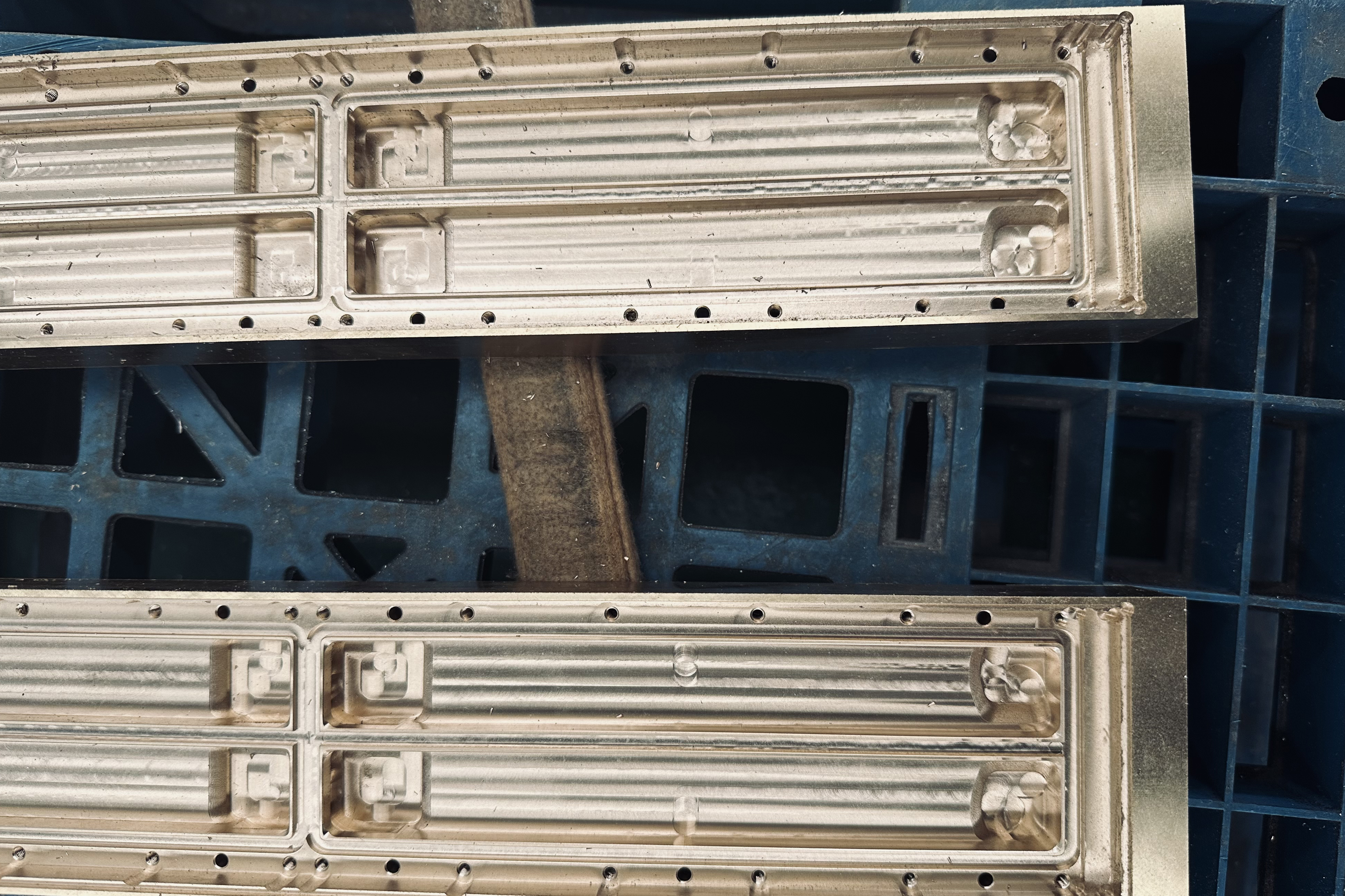
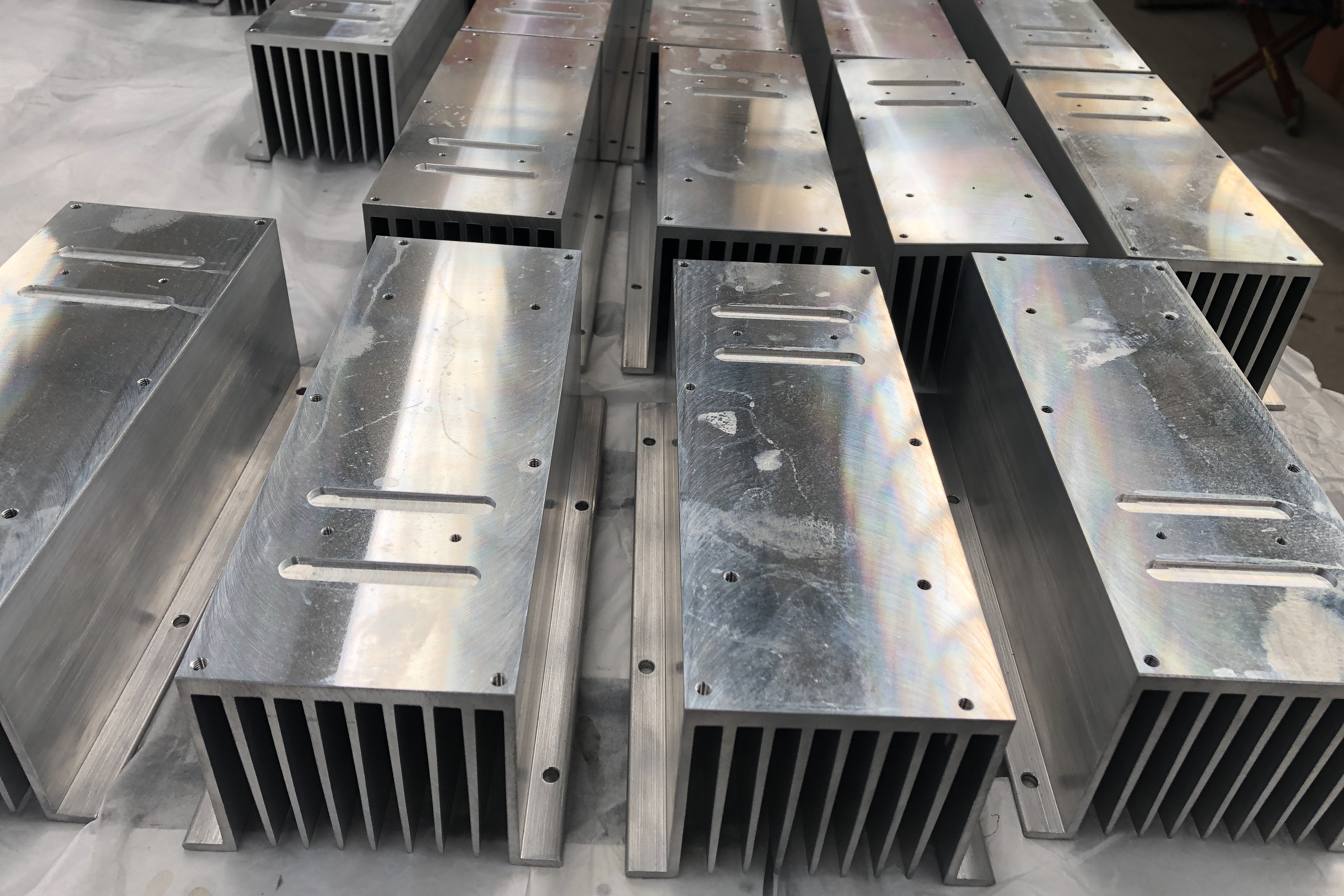

Our CNC milling can satisfy various requirements. We can work on profiles from small components to large extruded sections for fast, accurate and affordable results.
What is CNC milling?
CNC milling is a method of machining metal using a software programme. Like drilling, milling uses a rotating cutting tool, whose speed and pattern of movement is determined by data entered into the machine.
However, unlike a drill, the cutter on a milling machine is able to move along a number of axes, creating a range of shapes, slots and holes. The work-piece can also be moved across the machine in a number of different ways, allowing for very versatile results.
What is CNC milling used for?
CNC milling and drilling services are used across a wide array of applications in any number of industries. Some of the typical applications we supply CNC milling and drilling services for include:
Interior modules and furniture for public transport
Accessibility equipment
Temporary roadways
Benefits of CNC Milling process
1.High quality and precision is guaranteed
The very nature of CNC Machining as a process leaves very little room for error and high levels of accuracy and precision. This is because it operates from a computer led program, inputting 3D designs that have been developed via CAD (Computer-Aided Design). All operations are launched via a machine interface.
The machine executes these instructions without the need for manual input. These automated processes allow for ultimate precision to ensure even the most finite and complex geometry can be technically managed.
2. CNC Milling allows for high production output
The level at which CNC Machines operate means they are capable of high levels of production due to the automated processes involved. CNC Milling is a trusted and popular option if a part needs to be produced in high volume, with every part meeting the same level of consistency in terms of quality and finish. It is particularly easy to program and operate a 3-axis machine, achieving high accuracy at a low cost.
3. CNC Milling is a less labour intensive process
Using a CNC Milling Machine significantly reduces the labour involved in the production process. At total capacity, the tools used in a CNC Milling machine can spin at thousands of RPM (revolutions per minute), resulting in high production output while also being a time-saving expense. No manual processes could achieve a similar output. It’s worth noting that the simpler the design is, the less human intervention is needed. For example, if a complicated design required the blank to be moved in the process, this would involve machinists to ensure the process was completed safely and securely.
4. CNC Milling machines with uniformity
CNC machining tools are designed and developed to cut away at the workpiece with the highest levels of accuracy. The movement is directed from the computer program, meaning every single part is produced to the same level of accuracy. On a broader scale, components can be produced in high volume, with the manufacturer safe in the knowledge all completed parts will be of the same standard and finish.
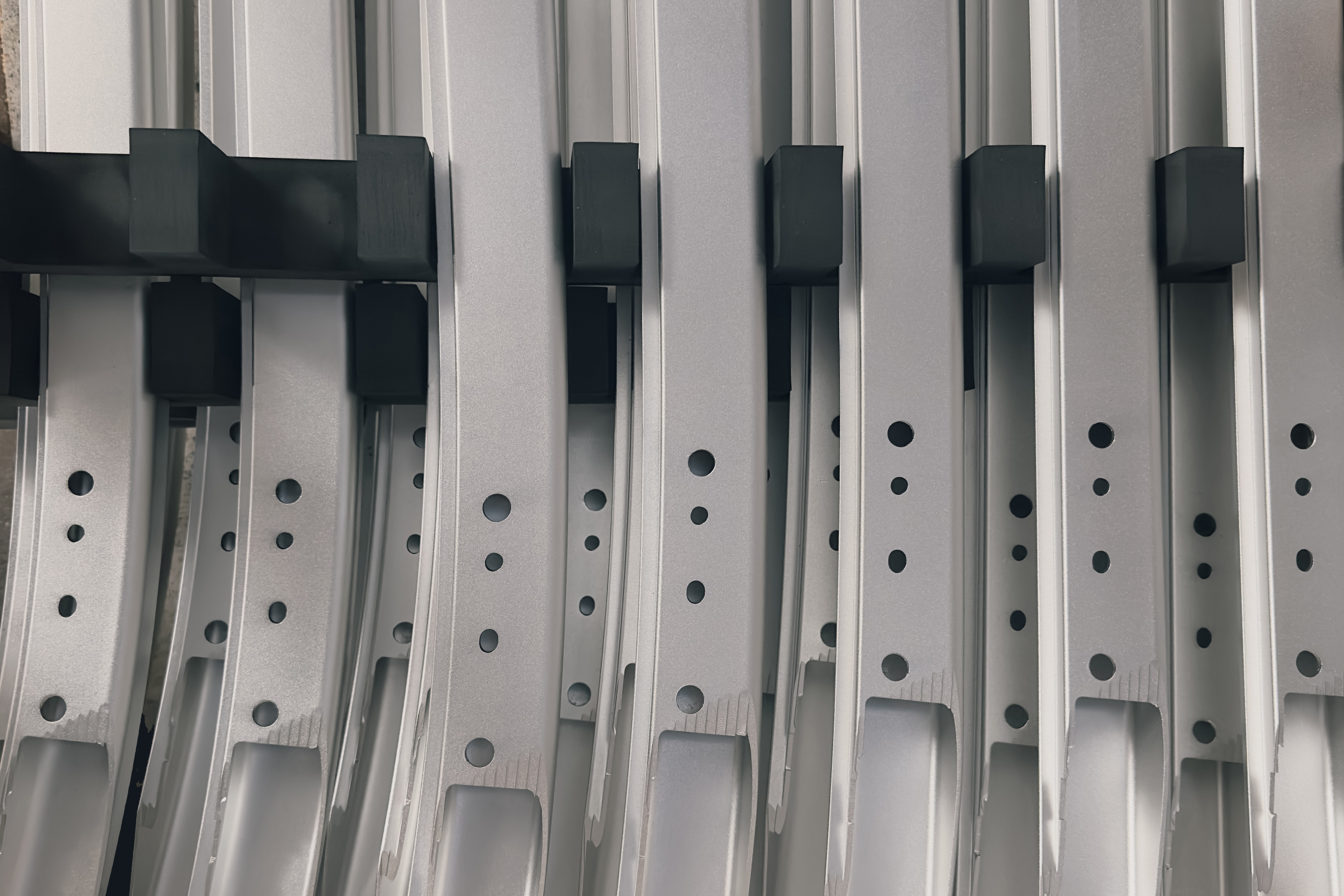
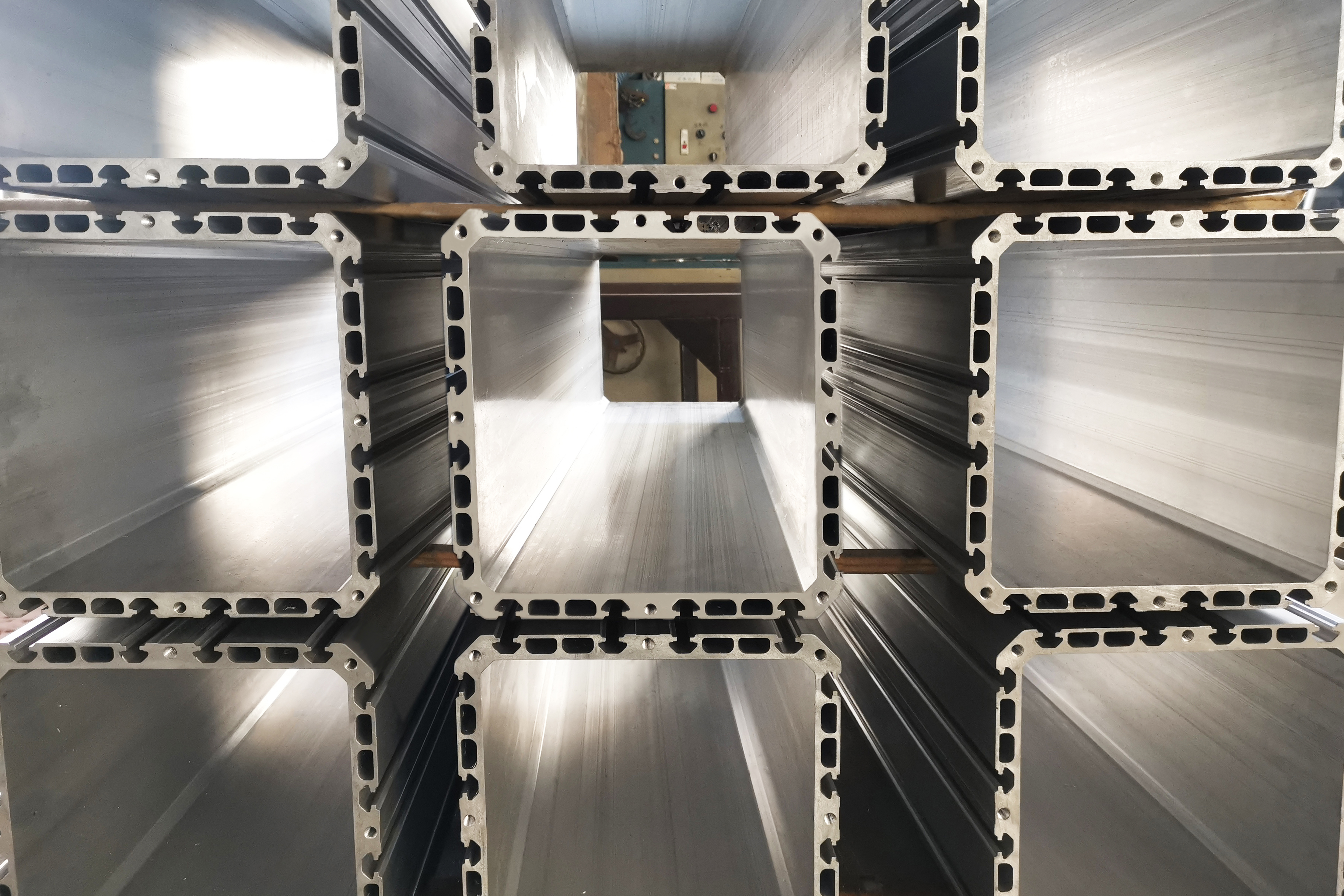

Our CNC drilling services has state of the art equipment, plenty of engineering experiences, and innovative approach to meet the most complex projects.
What is CNC drilling?
CNC drilling is a machining method used in mass production, in which numerical data is used to drill holes of a specific diameter and depth in an aluminium profile or component.
While drilling in itself is not a time-consuming process, changing the drill bits to create holes of various diameters does slow the operation as a whole. Our automatic tool changing drill stations minimize the operation and set-up time required, helping to make the drilling process as time- and cost-effective as possible.
What is CNC drilling used for?
As a fundamental CNC machining service, drilling can play a role in fabrication for almost any application. Some of the typical applications we supply CNC drilling services for include:
1.Commercial blinds 2.Transport interiors 3.Automotive trailers 4.Access equipment
5.Office furniture 6.Industrial doors 7.Balustrades and railings
Advantages of CNC Drilling
Compared to traditional drilling technologies, CNC drilling units offer a number of advantages, such as:
Higher accuracy. Drilling machines integrated with CNC technology can make holes that are accurate to the original design file within very tight margins.
Broader versatility. CNC drilling units can be used for a wide range of materials, from metal to plastic to wood. Additionally, since they can accommodate multiple drill bits, they can be utilized to produce a variety of holes.
Greater reproducibility. Since CNC drilling units are computer-controlled, they are lessprone to error. As a result, manufacturers can achieve high consistency throughout a batch and between batches.
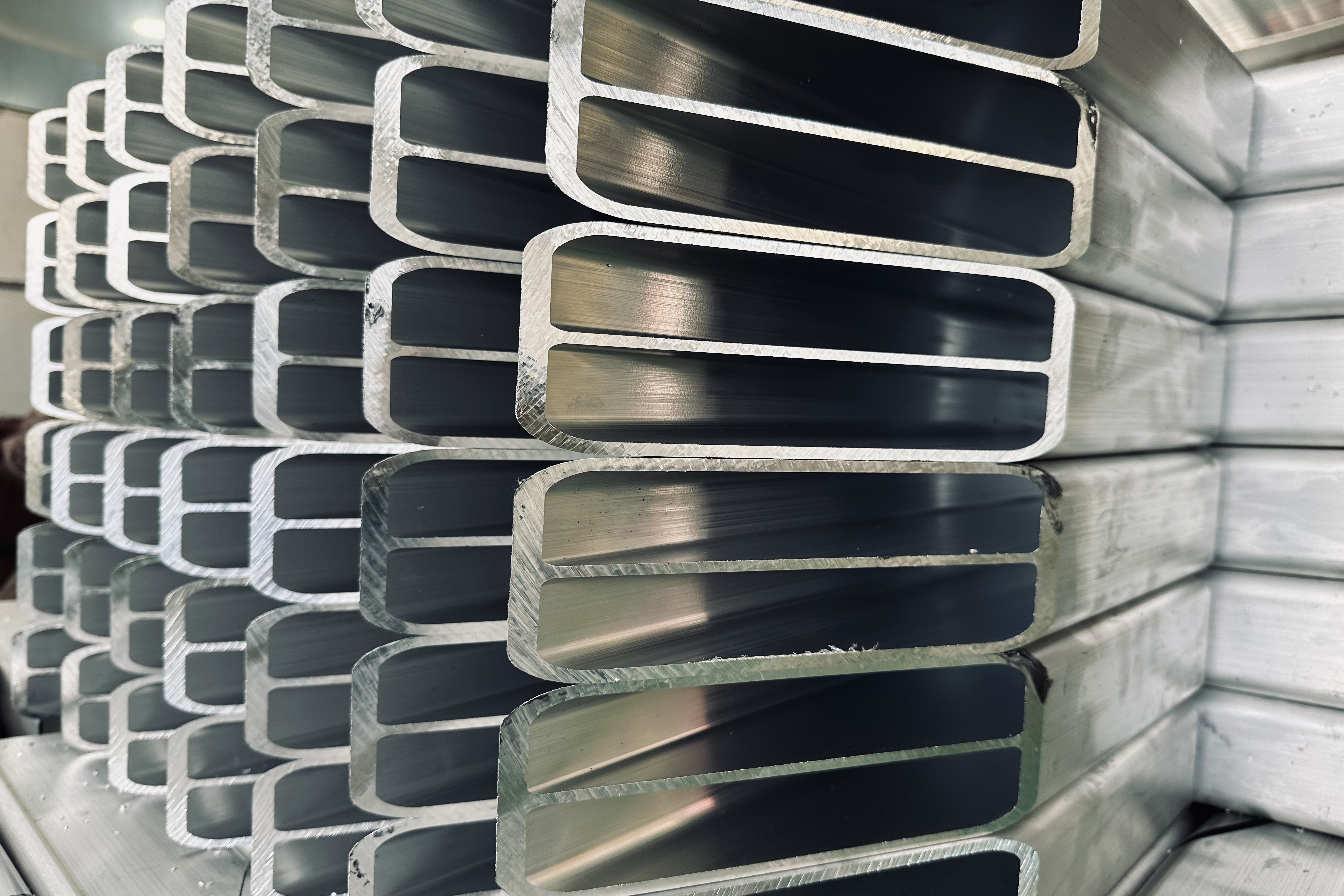

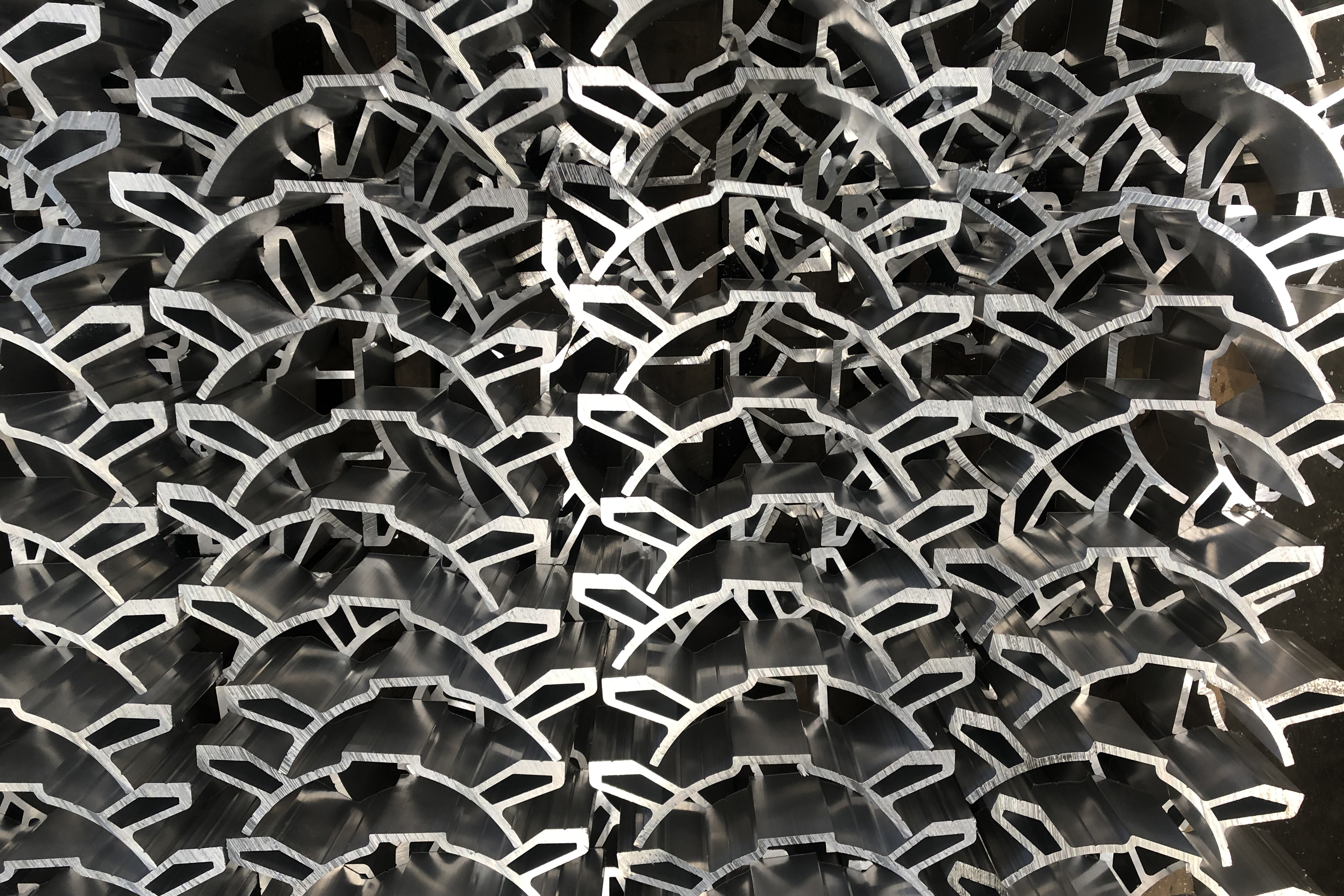
We provide very close tolerances on lengths of aluminium profiles according to customer requests.
What are cut to length aluminium extrusions?
“Cut to length” aluminium extrusions are exactly what the name suggests: extruded aluminium profiles that are cut to the length you require, ready for use or further fabrication.
What are cut to length aluminium extrusions used for?
It’s hard to find an industry that doesn’t use cut to length aluminium extrusions in some form or another. Here are just some of the market sectors we supply bar length to:
1.Curtain walling 2.Building and construction 3.Coach building 4.Solar shading assembly
5.Disability aids 6.Renewable energy 7.Office and industrial lighting 8.Building and office facades
9.Gaming machine manufacture and fabrication 10.Furniture and specialist seating 11.Bath and shower accessories
12.Heating and lighting 13.Flooring 14.Doors and windows 15.Automotive 16.Office furniture
17.Sport and outdoor activities 18.Aerospace 19.Military and security
When purchasing material closer to your net-shape required, cut-to-length service brings many benefits which include:
Advantages of Cut of length
1. Better yield
2. Material savings up to 15%
3. Supply of longer length material in one piece construction (no need for welding)
4. Reduction in handling and processing (welding, cutting or forming)
5.Ability to print cast numbers, parts numbers, project names and other information on the b-side of the material
Why are “Cut to length” extrusions sometimes referred to as profile length?
You’ll often hear us refer to ‘profile length’. That’s just referring to the extrusion process itself. Profile extrusion is when a block of metal (called a billet) is compressed and forced to flow through a die opening. The shape of the die opening will determine the profile of the extrusion, whether that’s an angle, a channel, or some complex sections.
So when we say ‘profile length’, we’re talking about a cut to length section of extruded aluminium.